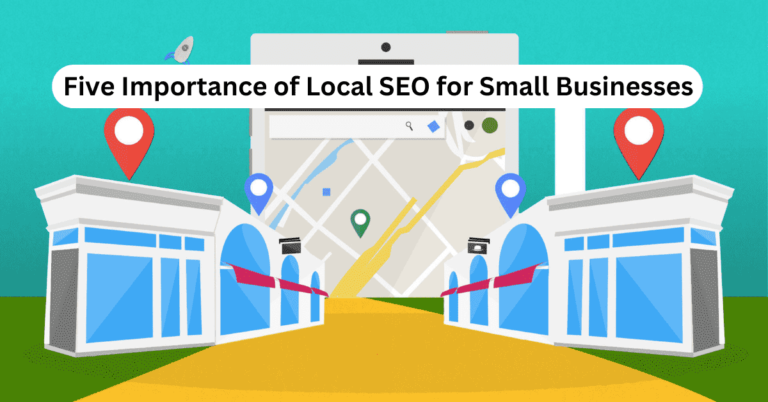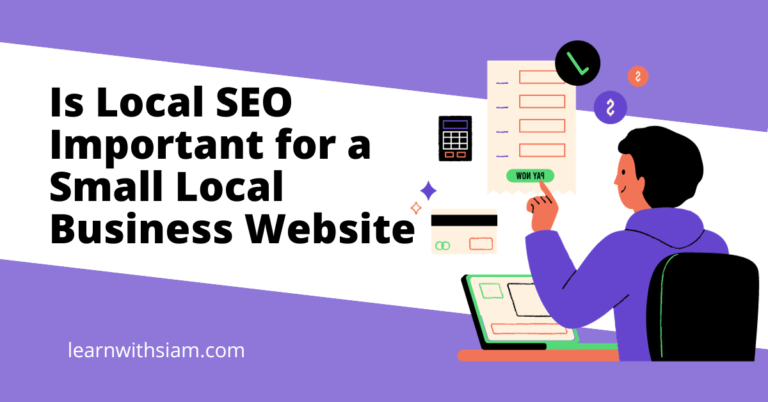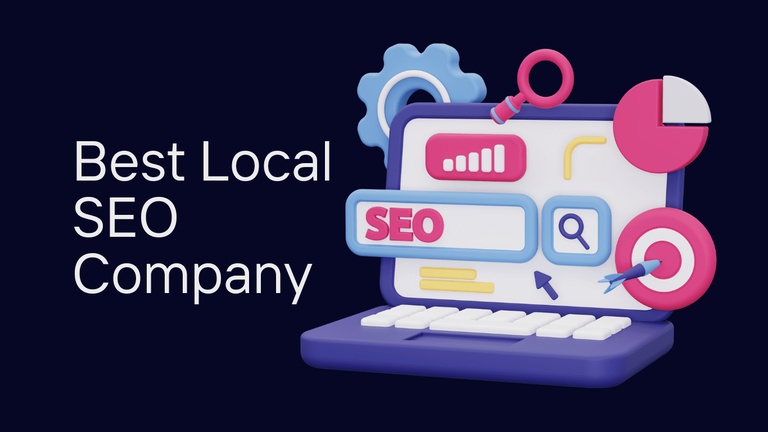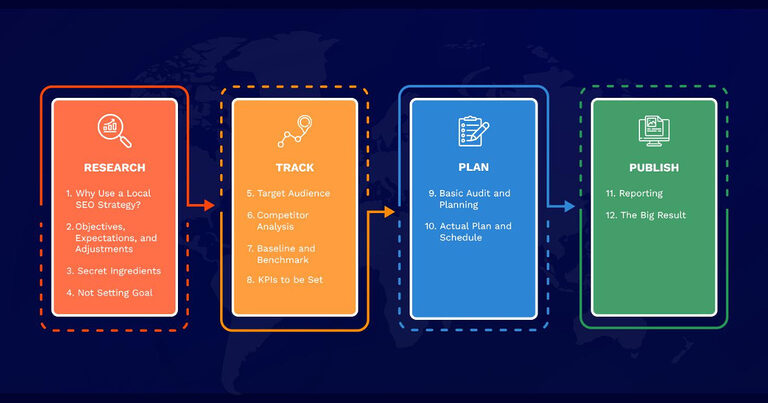How to Take Advantage of Local SEO for Your Business
Local SEO has become a critical component of digital marketing for any business looking to drive foot traffic and increase visibility in their geographic region. With more consumers using smartphones and mobile devices to find nearby businesses to engage with, optimizing your website and online presence for local SEO can help you stand out and attract more local customers.
What is Local SEO?
Local SEO refers to strategies and techniques used to optimize your website and online presence so that you rank higher in search engine results for local searches within your geographic area.
The goal of local SEO is to make your business appear prominently in the results when potential customers search for terms and phrases containing the name of your city, neighborhood, street, zip code or other local keywords. It targets searches with local intent.
For example, a restaurant in San Francisco would focus their SEO efforts on ranking well for searches like:
- Best brunch in San Francisco
- Lunch near financial district
- Seafood restaurants SOMA
Ranking high for these types of geo-targeted queries is key to driving foot traffic from local searchers to your brick-and-mortar location.
Local SEO helps you stand out in a crowded market by making your business more visible and discoverable to people looking for products and services in your area. It allows you to connect with customers at the critical moment when they are searching for a local business to engage with.
Why Local SEO is Critically Important
Here are some revealing statistics that highlight why optimizing for local SEO needs to be a priority:
- 76% of people who do a local search on their smartphone visit a related business within 24 hours (Source). This demonstrates how local SEO converts web searches into actual store visits.
- 28% of all mobile searches have local intent (Source). Over a quarter of searches on phones are looking for nearby businesses.
- 88% of consumers use search engines to find local information (Source). Most people go to Google and Bing for local business lookups.
- 72% of consumers who conduct a local search visit a business website before going to the physical location (Source). This makes having an SEO-optimized website vital.
As the data shows, optimizing for local SEO results in substantially more phone calls, store visits and conversions for brick-and-mortar businesses. Appearing on page 1 of the search results for location-based queries has a direct impact on the bottom line.
If you run a business with a physical location that customers can visit, focusing your SEO efforts on ranking for geo-targeted local keywords can drive tremendous growth. Let’s look at some of the key elements involved in effective local SEO.
Local SEO Ranking Factors
Google and other search engines use a variety of factors to decide which businesses should rank for local searches. Optimizing both on-page and off-page elements can improve your local SEO visibility.
On-Page Optimization
On-page optimization refers to changes you can make directly on your website to improve SEO rankings:
- Business Name, Address, Phone – Called NAP, this info must be 100% accurate and consistent across directories, Google My Business, schema markup and your website. Even slight inconsistencies can negatively impact local rankings.
- Page Titles & Meta Descriptions – Include your city, neighborhood or other location names in page titles and meta descriptions where relevant to reinforce your local relevance for those search terms.
- Content – Publish blog posts and long-form content optimized with local keywords, especially more informative “long-tail” key phrases with multiple location identifiers. This strengthens your authority and relevance for hyperlocal searches.
- Mobile-Friendly – With local searches happening predominantly on smartphones, having a fast, mobile-friendly website is a strong ranking signal. Ensure your site loads quickly on mobile devices.
- Technical SEO – Factors like site speed, security (SSL certificate), proper URL structures and sitemap submission all impact local search performance. Handle technical SEO tasks.
Off-Page Optimization
Off-page optimization involves generating signals outside your website to enhance trust and relevance:
- Google My Business – This is the cornerstone of local SEO. Completely fill out your Google My Business listing with accurate info, engaging posts, photos, products/services, hours, etc. to stand out.
- Citations – Have your business name, address and phone number listed consistently on dozens of directories, review sites and local data aggregators relevant to your industry. Citation signals boost local SEO.
- Reviews – Generate more positive online reviews on Google, Facebook, Yelp and other relevant review sites. Respond professionally to any negative reviews. Reviews build trust and social proof.
- Link Building – Earn backlinks from local directories, niche sites, publications, partners and sponsors. Backlinks reinforce your location-based authority and relevance.
Location-Based Ranking Signals
Google also uses location-based signals to determine local rank:
- Proximity – The closer the searcher is to your actual business location, the better. Businesses located nearer the searcher tend to rank higher.
- Area Served – Accurately specify your specific service area, city, county or region. This helps Google understand your scope.
- Categories – Use relevant location-based business category tags in listings and schema markup to reinforce your niche.
By optimizing all aspects of on-page SEO, off-page signals and location factors, you can improve local search visibility. Now let’s look at specific tactics to implement a results-driven local SEO strategy.
Local SEO Tactics to Get More Customers

Here are some of the most effective ways you can optimize your website and online presence for local SEO to drive more foot traffic, phone calls and customers:
Optimize Google My Business Listing
Google My Business profiles appear prominently in local search results, so optimizing yours should be a top priority. Include:
- Accurate business information – name, full address, phone number and hours.
- Descriptive categories and attributes that portray what you offer.
- Engaging posts with local news, events and photos that show your brand personality.
- Detailed products/services menu to educate potential customers.
- Responses to all Google reviews – both positive and negative – to demonstrate you value customers.
Learn more about optimizing Google My Business
Build Local Citations
Citations are mentions of your business name, address and phone number (NAP) on other authoritative websites and directories. Listing your NAP consistently across 50+ relevant sites helps reinforce your local SEO signals. Some top citation sites include:
- Google My Business
- Yelp
- YellowPages
- Yahoo Local
- Hotfrog
- TripAdvisor
- Foursquare
Citation building tools like Moz Local and Synup can automate finding and fixing conflicting citation listings across top sites.
Encourage Customer Reviews
Positive online reviews build trust and social proof for your brand. Proactively request customers leave reviews on Google, Facebook, Yelp and any other influential sites. Respond promptly to any reviews to demonstrate great customer service.
Send review requests on receipts, via email and text, through in-store signage and verbally. Offer incentives like discounts to motivate satisfied customers.
Create Location-Based Content
Publishing blog content with local keywords (city name, neighborhood, street names etc.) helps search engines understand your expertise in the geographic area. Target informative “long-tail” keywords.
For example, a fitness studio could write “The Best Yoga Studios in Sunset District, San Francisco” or “Top 5 Pilates Instructors in Lower Nob Hill.” Include other local landmarks and points of interest.
Local Link Building
Earning backlinks from local directories, niche sites, partners or sponsors signals Google that your business is trusted and authoritative locally. Reach out to opportunities for guest posts, local event sponsorships and more.
For example, a caterer could partner with wedding venues to get listed as a recommended vendor on their site. Or sponsor a booth at a local festival and get a backlink from the event website.
Local PPC Ads
Running paid Google and Bing search ads tightly targeted to zip codes, cities and specific proximity radius around your business allows you to tap into user intent. Track calls and conversions generated from your geo-fenced ads.
Use ad customizers to show the user’s exact distance from your stores. Dynamic keyword insertion can automatically include the searcher’s town in your ad copy.
Optimize Website for Local Keywords
Having a technical SEO-optimized site with good content focused around your location establishes your local search authority. Ensure your website loads quickly on mobile. Use schema markup to identify your business type and address.
Include your city, zip codes and surrounding neighborhoods in page titles, content, and URLs where it fits naturally. Don’t over-optimize or keyword stuff. Create unique landing pages and categories with geo-specific keywords.
Advanced Local SEO Tactics
Looking to take your local SEO efforts to the next level? Here are some more advanced strategies:
Geo-Modified Pages
Create location-specific landing pages like “Dentists in Omaha”, “Plumbers in Aurora” etc. optimized for each city or neighborhood you serve. This targets searchers looking for your services in specific areas.
Migrate to Google Maps
Create a free Business Profile on Google Maps to display your locations, hours, photos, attributes and reviews. This makes your business discoverable in map searches and Google Local Services ads.
Structured Data Markup
Add schema markup to your site identifying your physical business address, opening hours, services, reviews and other attributes. This helps Google understand your business type. Test markup using the Structured Data Testing Tool.
Google Posts & Q&A
Engage customers by posting updates, offers, events and answers to common questions directly on your Google My Business listing. Posts can help drive clicks and calls from searchers.
Google 360 Photos
Add virtual walkthroughs of your locations with Google’s Business View tool and 360-degree photo capability. This helps customers explore your store remotely before even stepping foot inside.
Google Ads Local Campaigns
Create pay-per-call, pay-per-visit and Pay per Action campaigns with Google Ads tightly focused on your city or region using radius targeting, location extensions and more. Track exactly how many calls and visitors your localized ads generate.
Location-Based Sitemaps
Create separate XML sitemaps for each geographic region you serve and submit them to Google Search Console. This can reinforce your relevance for local searches targeting that specific area.
These tactics take time to execute but can provide tremendous ROI in standing out for searches with local intent from customers in your backyard.
Local SEO Case Study
Let’s look at a real-world example showing the positive impact an end-to-end local SEO strategy had for a small service-based business targeting a neighborhood in a major metro area:
The Business
Main Street Mobile Detailing – A car wash and auto detailing service located in the Castle Heights neighborhood of Downtown Austin, TX. Relies predominantly on vehicle owner foot traffic from the immediate neighborhood.
The Problem
As city dwellers became more dependent on public transit due to high gas prices, Main Street saw car wash customer visits steadily decline over a 12 month period. Many residents no longer kept a vehicle. They needed an SEO strategy targeting nearby auto owners.
The Local SEO Solution
- Optimized Google My Business profile with complete info for the Castle Heights location including photos and neighborhood-specific content.
- Built citations on 50+ directories submitting the identical Main Street business name, address, phone.
- Created blog content targeting the keyword “car wash castle heights” and related long-tails.
- Secured backlinks from niche auto blogs by contributing guest posts on car care topics.
- Ran paid Google Ads tightly targeted within a 2 mile radius of their shop with location extensions enabled.
- Built 20+ relevant links from Austin neighborhood blogs by sponsoring a community concert.
The Results
Within 9 months of executing the focused local SEO strategies Main Street Mobile Detailing saw:
- Their GMB listing went from #4 to #1 in Google local 3-pack results for “car wash castle heights” searches.
- Organic website sessions from local Austin users increased 149% MoM.
- 20% average increase in car wash customers attributed to improved local SEO visibility.
- 32% more website calls from local phone numbers.
- Cost per car wash customer acquired via SEO averaged $5.21 vs $17.68 via promotional flyers.
This case study highlights how even a single-location local business can benefit tremendously from executing key local SEO tactics to stand out in their community.
Common Local SEO Mistakes To Avoid
When starting out with local SEO, there are a few common mistakes made by businesses just getting started on optimization. Being aware of these pitfalls right away helps avoid learning the hard way:
Not Monitoring GMB Listing Traffic
Google My Business provides valuable data on how many searches resulted in clicks, calls, directions and photos views for your listing. Not monitoring this regularly means missing optimization opportunities.
Generic Keywords Only
Focusing solely on broad city name keywords Results in less qualified traffic. Targeting hyperlocal long-tail keywords like neighborhoods and streets brings higher intent users.
No Location Pages
Not having dedicated location or service pages optimized for each region you serve splinters equity and sends mixed locality signals. Pittsburgh painters need a unique page.
Skipping Reviews Generation
Positive local reviews build visibility and trust. Not actively encouraging customer reviews on Google, Facebook and elsewhere passes up valuable social proof.
Ignoring Potential Link Sources
Local sponsored events, sports teams, directories, vendors etc. all offer link prospects. Not exploring options leaves potential links on the table.
Being aware of these common local SEO pitfalls from the outset helps sidestep losing time and opportunity. Now let’s examine some key elements of local SEO success in more detail.
The Vital Role of Google My Business in Local SEO
Google My Business listings have become the cornerstone of local SEO. They offer tremendous visibility very prominently in local pack results:
Ranking #1 in the local 3-pack results can drive up to a +323% increase in clicks to your website according to Moz Local.
Here are some of the reasons optimizing Google My Business is critically important:
- High Visibility – The local finder pack stands out clearly at the top of results when users search for local businesses. This placement gets maximum impressions.
- Rich Profile – Your hours, photos, map, reviews, attributes and more all display prominently to searchers to educate them about your business.
- CTR Magnets – Location markers, calls, directions buttons and other features result in high click-through-rates.
- Mobile Optimization – Local results favor mobile-friendly profiles with complete information that engages on-the-go users.
- Review Impact – Star rating and number of reviews influences local pack ranking position relative to competitors.
- Q&A – Users can ask questions and get detailed answers posted directly on your listing.
- Posts – Highlight sales, events and updates through posts that display in search and on Maps.
Learn more about the benefits of GMB
Given the vital importance of Google My Business, optimizing your profile should be a top priority:
- Completely fill out all business info like name, full address, phone, hours, etc.
- Use engaging photos showing customers, storefront, products & services.
- Select the correct categories to reflect what your business offers.
- Add detailed attributes like payment options, accessibility options, wifi, etc.
- Highlight products, services, and amenities to educate searchers.
- Syndicate posts & offers to drive clicks from SERPs.
- Respond to all Google reviews to show you value customers.
- Answer common questions to establish yourself as an authority.
Don’t take your GMB listings for granted – they are invaluable digital real estate for local visibility. Keep them optimized for maximum positive local SEO impact.
Importance of Citations for Local SEO
Another important element to establish authority in local SEO is citation building.
Citations are mentions of your business name, address and phone number (NAP) on other authoritative sites and directories relevant to your industry.
Here are some of the key benefits citations provide for local SEO:
- Reinforces the consistency of your NAP data across the web. Local ranking algorithms favor this.
- Helps associate your business name with your geographic location signals.
- Links your website domain authority with your local NAP listing across more domains.
- Adds more location-specific signals leading back to your site to increase trust.
- The more directories and listing sites that contain your NAP, the greater your visibility and prominence across the local business ecosystem.
Some top citation sites to consider are:
- Google My Business
- Yelp
- YellowPages
- MapQuest
- Hotfrog
- CitySquares
- Tripadvisor
- MerchantCircle
There are over 100 potential local citation sources you can consider listing your business on. The key is listing your NAP consistently on each site. Even slight variations can dilute signals.
Tools like Moz Local, Synup and Yext can help identify all your current citation listings and automate finding and fixing conflicting or duplicate ones. This streamlines properly optimizing dozens of citations for maximum local SEO benefit.
Driving Reviews to Improve Local SEO
Customer reviews are another important element that influence local SEO rankings Positive customer reviews play a crucial role in local SEO success. They not only influence your map pack rankings, but also provide invaluable social proof to attract new customers.
Here are some of the ways positive local reviews impact SEO visibility:
- The star rating of your Google My Business listing has a direct correlation to where you rank in the local finder pack results. Listings with higher overall ratings outrank competitors with more mixed or negative ratings.
- The number and volume of reviews factors into local pack rankings. Listings with a higher quantity of reviews tend to perform better than those with just a handful of ratings.
- Reviews help establish trust and social proof. The more positive sentiment and recommendations a business has online, the stronger its domain authority and local relevance signals become.
- Responding to customer reviews helps improve sentiment and perception. 72% of consumers say a business replying to reviews makes them trust the company more according to BrightLocal.
- Negative reviews should always be addressed transparently and professionally. Taking feedback seriously rather than ignoring it improves how people view your brand.
Because reviews are so integral to customer trust and local SEO visibility, generating and managing them should be an ongoing priority:
Review Generation Tactics
- Send email and text requests to customers asking them to leave an online review after purchases and appointments.
- Add a review request on receipts and invoices thanking customers and including your listing URLs.
- Use in-store tablets and signage to collect reviews right on premises before customers leave.
- Incentivize reviews by offering discounts, free gifts or giveaways for leaving feedback. Contests work well too.
- Run social media and digital ads targeting past customers asking them to review your business.
- Prioritize getting reviews on Google My Business, Facebook and industry-specific rating sites like Zocdoc for doctors or Cars.com for dealers.
Review Management Best Practices
- Respond professionally to ALL reviews (positive and negative) within 24-48 hours thanking the customer.
- Politely address any criticisms mentioned in negative reviews and offer solutions. Never get defensive.
- Monitor review momentum and volume on key sites using tools like ReviewTrackers and Moz Local.
- Audit new reviews for any NAP inconsistencies that need correcting on third-party sites.
Proactively managing customer reviews needs to be an integral part of your local SEO strategy. The benefits in improved visibility, leads and customer perception easily justify the investment required.
Optimizing Websites for Local SEO
Your website serves as the digital hub and backbone of all other local SEO efforts. Having it properly optimized for your target service location or geographic area helps establish your relevance and authority.
Here are key website optimization strategies for improving local SEO:
Location-Specific Page Content
Include your city, neighborhood, street or other local area names organically within page titles, headers, content, meta descriptions and URLs where it fits naturally. Don’t over-optimize. Have pages targeting each specific region.
Mobile-Friendly Design
With local searches happening predominantly on smartphones, having a fast loading, modern responsive site is critical for providing a seamless user experience. Avoid clunky, broken mobile pages.
Landing Pages by Location
Create dedicated landing pages like “Dentists in Omaha” or “Roofers in Dallas” that focus on serving each geographic area you want to target and backlink to internally.
Local Schema Markup
Implement local business schema markup to identify your business name, full address, phone number and geo-coordinates. This helps Google understand the local nature of your business.
Site Speed Enhancements
Optimize page load speed with caching plugins, image optimization, minified code, CDNs and upgraded hosting. Faster websites improve local SEO rankings and UX.
URL Structures
Use location names and zip codes within URL slugs where relevant like example.com/boston-financial-advisor. HTML sitemaps also help.
Content Optimization
Blog posts and long-form content focused on your service area educate searchers about your local expertise and experience. Share local insights.
By optimizing your website for location-specific SEO factors, you make it easy for search engines to understand your relevance for local service queries and geo-targeted keywords in each region you serve.
Link Building Tactics for Local SEO
In addition to your website, local link building aims to gain backlinks from other authoritative sites related to your city, neighborhood or geographic service area.
Building these location-specific backlinks helps reinforce the local relevance of your business and improve local SEO. Here are some proven tactics:
Guest Post on Local Blogs
Reach out to local blogs read by your ideal customers and pitch contributing posts related to your niche. Get a backlink in return.
Local Business Partnerships
Partner with vendors or other complementary businesses to get listed as a recommended service provider on their site with a link back to your website.
Local Directory Listings
Get listed in niche local directories related to your industry like “Top Dallas Plumbers” and link back to your site.
Sponsor Local Events
Sponsor relevant local events, fundraisers, sports teams and organizations in exchange for a link on their website.
Local PR Outreach
Pitch experts at your business as sources for articles relevant to your geo-area. Share data, insights and trends with local reporters.
Build Relationships
Network with local businesses, influencers and organizations and build relationships leading to word-of-mouth referrals, social shares and link opportunities.
Dedicating time specifically to earn high-quality backlinks from local sites helps amplify your localization signals and improve local search visibility.
Tracking the ROI of Local SEO Efforts
After putting time and effort into local SEO campaigns, it’s crucial to track key metrics to quantify the return on investment:
Keyword Rank Tracking
Use tools like Moz and SEMRush to monitor your local organic and map pack rankings for target keywords. Meeting ranking goals indicates SEO success.
Traffic Sources
Dive into Google Analytics traffic source reports to analyze trends in direct, organic search, local ads and referral traffic to measure increases driven by SEO efforts.
Calls and Store Visits
Use call tracking software and unique UTM codes to quantify phone calls and physical visits generated by your website and online listings.
Conversions Tracked
Beyond traffic, carefully monitor online and offline conversions like email signups, purchases, appointments booked and leads captured from local SEO channels.
ROI Calculations
Factor in the costs involved with SEO initiatives like software, services and personnel time to accurately calculate your return on investment.
Without rigorous measurement of key metrics, it’s impossible to know the true impact local SEO efforts are having on visibility, leads and revenue. Track campaigns diligently to ensure positive ROI.
Conclusion
Optimizing your digital presence for local SEO delivers tremendous value for multi-location brands as well as small brick-and-mortar businesses competing within a specific geographic area. By appearing prominently in search results for queries containing location-based keywords and serializers, you can effectively connect with nearby customers when they are actively looking for your products or services.
The effort and investment involved in executing location-focused SEO strategies like optimizing Google listings, building local citations and reviews, creating geo-targeted content, earning local links and rigorously tracking performance provides sustainable long-term benefits. Properly optimized local SEO helps drive calls, boost foot traffic and increase conversions from locals searching for businesses near them.
For organizations who derive in-person sales from a physical location, prioritizing local SEO is mission critical. Follow the comprehensive guide outlined here to build an effective foundation for standing out locally across search engines and map results. The high-ROI impact on brand visibility and new customer acquisition makes local SEO a worthy investment for your long-term success.
FAQs
Q1: How can local SEO help my business?
Local SEO can significantly benefit your business by increasing online visibility, attracting more local customers, and driving in-store foot traffic. It achieves this through techniques like citation and link building, making your business easily discoverable by new customers in your area.
Q2: How to create a winning local SEO strategy for your business?
To create a successful local SEO strategy, follow these steps: list your address accurately, set up a Google My Business listing, ensure your Facebook page includes your address, add your business to local directory websites, network within the community, monitor social mentions, and produce content related to your location.
Q3: How to do local SEO for small businesses?
To implement local SEO for small businesses, focus on optimizing your Google Business Profile, conducting local keyword research, creating relevant and informative content, adding location-specific pages to your website, leveraging local structured data markup, and ensuring your website is mobile-friendly.
Q4: How do I dominate local SEO?
To dominate local SEO, pay attention to title and description tags, optimize your Google Business Profile, encourage online reviews, create separate service pages, and ensure consistent online directory listings.
Q5: How much does the average local SEO cost?
The cost of local SEO can vary widely, with small-scale packages typically ranging from $400 to $900 per month, while comprehensive local SEO services can cost up to $4,000 per month. Most businesses allocate budgets ranging from $500 to $10,000 per month.
Q6: How much should a small business pay for SEO?
Small businesses paying for SEO on a monthly retainer generally spend between $500 to $1,500 per month, while hourly rates typically range from $75 to $100. One-off SEO projects may cost between $2,501 and $5,000 per project.
Q7: Is SEO worth it for small businesses?
SEO can be highly valuable for small businesses as it can increase website traffic, provided there is a market need for your product or service and your website is designed to convert visitors into customers. Increased website traffic can lead to higher sales for your business.
Q8: How to do local SEO step by step?
To execute local SEO step by step, follow these key actions: create a Google My Business Profile, use relevant keywords, maintain consistent NAP (Name, Address, Phone number) data, obtain high-quality citations, build online reviews, implement schema markup, and source quality backlinks.
Q9: How can I improve my local SEO in 2023?
In 2023, you can enhance your local SEO by focusing on title and description tags, optimizing your Google Business Profile, emphasizing online reviews, creating separate service pages, and paying attention to online directories and citations.






